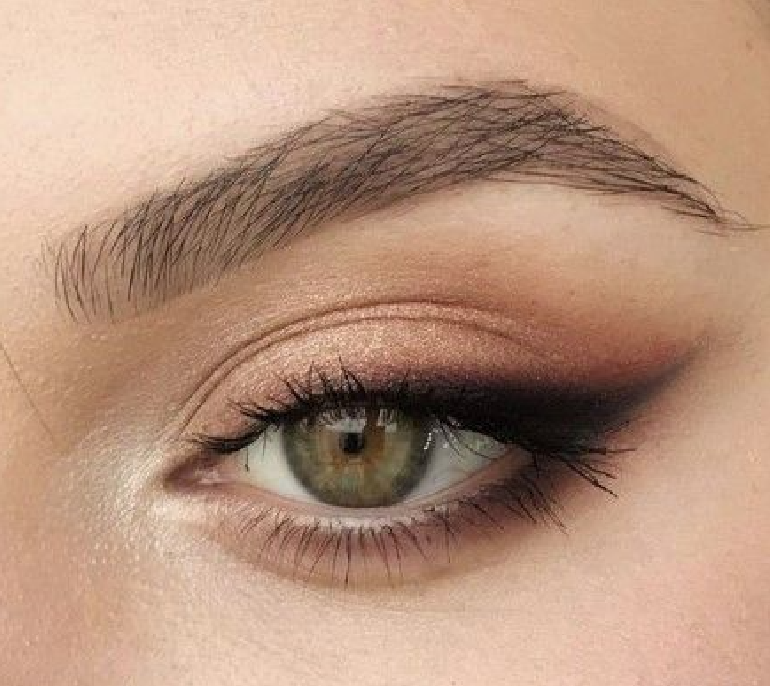Eyeshadow is one of the most creative and expressive tools in the makeup world. With endless colors, finishes, and techniques to explore, eyeshadow allows you to transform your look—whether you’re aiming for a subtle daytime vibe or a bold, dramatic evening statement. In this guide, we’ll explore the different types of eyeshadow, how to choose the right shades, and expert tips for flawless application.
Types of Eyeshadow
Eyeshadow comes in a variety of formulations, each with its own unique benefits. Here’s a rundown of the most common types:
- Powder Eyeshadow:
- Texture: The most popular type, powder eyeshadow is versatile and easy to blend. Available in both matte and shimmer finishes, it works well for everyday looks and more complex designs.
- Best For: Beginners and professionals alike. It’s great for building up color and blending.
- Cream Eyeshadow:
- Texture: Cream eyeshadows have a smooth, creamy texture and provide a rich color payoff. They often have a slightly dewy finish, making them perfect for a luminous look.
- Best For: Quick application and long-lasting wear. Great for those with dry eyelids as it provides moisture.
- Liquid Eyeshadow:
- Texture: Liquid eyeshadow has a highly pigmented, fluid formula that dries quickly on the eyelids. It can create dramatic looks with minimal effort.
- Best For: Intense color and a metallic or shimmer finish. It’s ideal for bold, high-impact looks.
- Loose Pigment:
- Texture: Loose pigment eyeshadows are finely milled powders with intense pigmentation. They offer vibrant color but can be messier to apply than pressed powders.
- Best For: Highly artistic looks or adding extra shimmer to the eyes. Perfect for those who want maximum color payoff.
- Stick Eyeshadow:
- Texture: Eyeshadow sticks or crayons are solid, easy-to-use products that glide across the eyelids. They provide quick application and are often long-lasting.
- Best For: On-the-go application or beginners who want a no-fuss option. Stick eyeshadows are easy to carry and blend.
Eyeshadow Finishes
Eyeshadows come in a range of finishes, allowing you to create a variety of effects on your eyelids:
- Matte: Matte eyeshadows have no shimmer or shine, providing a flat, even finish. They are great for adding depth and dimension to your eyes.
- Shimmer: Shimmer eyeshadows have tiny light-reflecting particles that give a subtle glow. These are perfect for highlighting certain areas like the inner corner of your eyes or the brow bone.
- Satin: Satin eyeshadows fall between matte and shimmer, offering a soft sheen without the sparkle. They’re ideal for a more natural look with just a hint of luminosity.
- Metallic: Metallic eyeshadows offer a high-shine finish that mimics the look of metal. They’re excellent for creating bold, eye-catching looks with intense color payoff.
- Glitter: Glitter eyeshadow is packed with larger glitter particles that create a bold, sparkling effect. It’s typically used for special occasions or when you want to make a statement.
How to Choose the Right Eyeshadow Shades
Choosing the right eyeshadow colors can elevate your eye makeup game and enhance your natural features. Here’s a guide to picking shades based on your eye color and skin tone:
- For Brown Eyes:
- Brown eyes are incredibly versatile and can rock almost any eyeshadow shade. Warm tones like bronze, gold, and copper bring out the richness of brown eyes. Purples, greens, and blues also complement brown eyes beautifully.
- For Hazel Eyes:
- Hazel eyes have both brown and green tones, so earthy colors like gold, olive, and brown work beautifully. Purple and pink shades can also make the green flecks in hazel eyes more prominent.
- For Dark Skin:
- Rich jewel tones like emerald, sapphire, and amethyst look stunning on dark skin. Bold colors like orange, deep purple, and metallics also complement darker skin tones beautifully.
- For Medium Skin:
- Warm hues such as copper, bronze, and gold look amazing on medium skin tones. Peach, mauve, and deep greens are also flattering options.
- For Fair Skin:
- Light, pastel shades like soft pinks, lavender, and taupe work well with fair skin. Metallics and cool tones like silver and icy blues create a striking contrast.
Eyeshadow Application Techniques
Mastering eyeshadow application can take some practice, but these steps can help you create a flawless look:
- Prep Your Lids: Start by applying an eyeshadow primer or concealer to your eyelids to create a smooth base. This step helps your eyeshadow stay in place longer and prevents creasing.
- Use the Right Brushes:
- Flat Shader Brush: For packing on color.
- Blending Brush: For softening edges and blending shades together.
- Smudging Brush: For precise work like smudging eyeshadow along the lash line.
- Angled Brush: For detailed application in the crease or outer corners.
- Apply Transition Shades: For a well-blended look, start by applying a transition shade in the crease of your eyelid. Use a neutral or light brown color and blend it well for a seamless effect.
- Pack on Color: Use a flat brush or your fingertip to apply your main eyeshadow color on the eyelid. For a more vibrant look, you can dampen your brush slightly before applying shimmer or metallic shades.
- Blend, Blend, Blend: Blend your colors where they meet to avoid harsh lines. A fluffy blending brush is key for a smooth, gradient effect.
- Highlight: Use a lighter shimmer or satin shade to highlight the inner corners of your eyes and the brow bone. This will give your eyes a more awake and lifted appearance.
- Define the Outer V: For added depth, apply a darker shade to the outer corner of your eyes in a “V” shape. Blend it inward toward the crease to create dimension.
- Finish with Liner and Mascara: Complete your eye look with eyeliner and mascara to define your lash line and make your eyes pop.
Popular Eyeshadow Techniques to Try
If you’re looking to experiment, here are some popular eyeshadow techniques to play with:
- Smoky Eye: This classic look uses dark, blended shades to create a sultry, smoldering effect. Typically, black, brown, or gray shades are used to gradually darken the eyelid toward the outer corner.
- Cut Crease: A cut crease involves defining the crease of your eyelid with a contrasting shade, then “cutting” across the crease with concealer to create a sharp contrast. This look is bold and dramatic, perfect for a night out.
- Halo Eye: For a halo eye, apply a darker shade on both the inner and outer corners of the lid, leaving the center blank. Then, apply a lighter or shimmery shade in the center for a radiant, eye-catching effect.
- Gradient Eye: Blend multiple colors from light to dark across your eyelid for a seamless, gradient look. This technique adds dimension and is ideal for creating a soft, romantic eye look.
Eyeshadow Mistakes to Avoid
To ensure your eyeshadow always looks its best, avoid these common mistakes:
- Not Using Primer: Skipping primer can lead to creasing and fading. Always prime your lids for a smooth base and longer wear.
- Over-Applying Product: Less is often more when it comes to eyeshadow. Start with a light hand and build up color gradually to avoid a heavy, cakey appearance.
- Skipping Blending: Blending is key to a professional-looking eyeshadow application. Take your time to blend out any harsh lines for a seamless finish.
Conclusion
Eyeshadow is a powerful tool for enhancing your eyes and expressing your creativity. From subtle everyday looks to bold, artistic designs, eyeshadow allows you to experiment with colors and textures. By understanding the different types, choosing the right shades for your eyes and skin tone, and perfecting your technique, you can master the art of eyeshadow and create stunning looks with ease.

